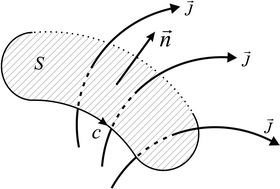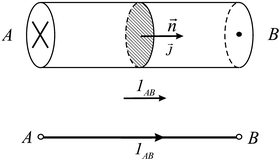Abstract
This chapter presents an analysis of the magnetic and electrical fields in the air gap of a cylindrical machine. It is assumed that the fields come as a consequence of electrical current in the windings. The magnetic field in the air gap is created by the currents in both stator and rotor, which generate the corresponding stator and rotor magnetomotive forces.
This is a preview of subscription content, log in via an institution.
Buying options
Tax calculation will be finalised at checkout
Purchases are for personal use only
Learn about institutional subscriptionsNotes
- 1.
Interpretation of magnetic flux as a vector can be understood as a convention and a very suitable engineering tool in the analysis of complex electromagnetic processes taking place in electrical machines. Nevertheless, magnetic flux is a scalar by definition. It may be called directed scalar, as it is closely related to the spatial orientation of relevant turn or winding, and it depends on the course and direction of the vector of magnetic induction. Magnetic flux Ψ can be compared to the strength I of spatially distributed electrical currents, which describe the phenomenon of moving electrical charges. The following illustration shows spatial currents passing through the surface S which is leaning on the contour c:

The vector of current density J gives direction of the current I through the contour. Its integral over surface S (the flux of spatial currents) gives the current intensity I. In the case when the vector of spatial currents J is of the same orientation at all points of surface S (homogeneous), the current intensity can be determined by the following expression:
$$ I = \int\limits_S {\vec{J} \cdot {\text{d}}\vec{S} = } \int\limits_S {J\cos \left( {\vec{J},\vec{n}} \right){\text{d}}S = J\cos \left( {\vec{J},\vec{n}} \right)\;S} $$For the line conductor shown in the next figure, the unit vector of normal n on surface S represents reference direction of the current, or reference direction of a branch of an electrical circuit:

The sign of the current I in the section AB of the conductor corresponds to the direction of the vector J. For this reason, the current intensity I can be called directed scalar. By replacing the spatial current density J and the current intensity (strength) I by the magnetic induction B and magnetic flux Φ, the previous considerations can be used to establish the magnetic flux as a directed scalar. Flux vector through a contour c has direction of the normal on surface S and its algebraic intensity, determined by the integral of magnetic induction over the surface S.
- 2.
Total flux Ψ of the stator winding with N turns, with sinusoidal distribution of conductors along circumference of the stator, and with flux Φ S in one of the turns is not equal to NΦ S because the fluxes of individual turns are not equal. Flux Φ S in a single turn (contour) is function of position θ.
Author information
Authors and Affiliations
Rights and permissions
Copyright information
© 2013 Springer Science+Business Media New York
About this chapter
Cite this chapter
Vukosavic, S.N. (2013). Magnetic Field in the Air Gap. In: Electrical Machines. Power Electronics and Power Systems. Springer, New York, NY. https://doi.org/10.1007/978-1-4614-0400-2_8
Download citation
DOI: https://doi.org/10.1007/978-1-4614-0400-2_8
Published:
Publisher Name: Springer, New York, NY
Print ISBN: 978-1-4614-0399-9
Online ISBN: 978-1-4614-0400-2
eBook Packages: EnergyEnergy (R0)



